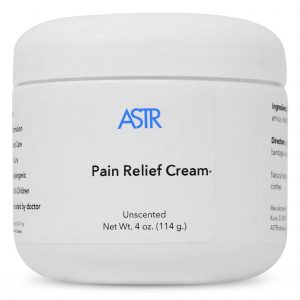Trigger Finger: Symptoms, Causes, Risk Factors, Healing Cycle & Treatment
Trigger Finger: Symptoms, Causes, Risk Factors, Healing Cycle & Treatment
What is Trigger Finger?
Trigger finger is a condition affecting one or more hand’s tendons and making it difficult to bend or move the affected finger.[1]
Tendons are fibrous cords that attach your muscles to bones and in trigger finger, these tendons become inflamed and fibrotic (forming scar tissue). This inflammation and scar tissue decreases the range of motion of the tendon, resulting in pain, stiffness, and the sensation of locking or catching when bending or straitening the finger. Other names for trigger finger are stenosing tenosynovitis or stenosing tenovaginitis. The thumb, ring finger, or little finger are usually affected and more than one finger can also be affected. [2] One of your fingers gets stuck in a position and it becomes difficult or painful to move or straighten it. [3]
What are the Symptoms of Trigger Finger?
Symptoms of trigger finger usually start without any single injury and generally follow a period of heavy or repetitive and use, especially in gripping and pinching movements. [4]
You may have a tender nodule on the palmer side, pain, and morning stiffness. You may also experience catching, locking, or popping with finger movements. The stiffness and locking may become worse after a stage of inactivity and your fingers may also sometimes get locked in a bent position. [5]
Who is at risk of Trigger Finger?
Trigger finger frequently occurs in people who use their fingers or thumbs for multiple repetitive movements, which may include farmers, industrial workers, and musicians. [6]
The risks factors for trigger finger may include diabetes, rheumatoid arthritis, repetitive gripping, female gender, and carpal tunnel syndrome surgery. People who are at jobs requiring high repetitive movements and gripping actions are at higher risks of getting trigger finger. [7]
Those who are within the age bracket of 40 and 60 are also at more risk of getting trigger finger. [8]
How Trigger Finger is Diagnosed?
Trigger finger is usually diagnosed by your doctor through a physical exam and your medical history. Your doctor will check for characteristic clicking upon movement and look for bent or swollen finger nodules. Opening and closing your hand and finger is helpful for the assessment and there is no need for an X-ray or radiological imaging. [9]
How to treat trigger finger?
After getting diagnosed with a trigger finger, the next main goal is to treat it and resolve the symptoms and the best option for that is to avoid repetitive trigger activities for four to six weeks [10]. Wearing a bracelet or splint to restrict motion and provide rest to the affected tendons is also an option [11]. The medications commonly used for the purpose are anti-inflammatory and steroid ones, failure in which may lead to you requiring surgery.
An effective alternative for all that rough and ineffective treatment methods is here at ASTR, where we use specifically made tools and physical methods to release tendon nodes and treat trigger finger. You can get the ASTR tools with the user guide to use them at home in a few minutes session and it will help you in treating trigger finger [12].
How ASTR treats Trigger Finger?
During the normal healing cycle which contains three stages, there is increased temperature, loss of function, redness, pain, and swelling in the first stage. There is fibrosis, fascia restriction, muscle spasm and trigger points in the second stage and maturation occur in the third stage.
In trigger finger, your muscles become restricted and painful in their range of movement, due to the formation of fibrous tissue and scar. The conventional treatment options generally practiced such as heat/ice, estim, foam roller, massage, stretching, and strength exercises are ineffective.
So, the better treatment option here provided at ASTR is based on resolving the cause at the respective stage,
Trigger Finger Healing Cycle
Inflammation Stage:
In the inflammation stage, the recommended options are rest, MagnaHeal (by using a magnetic force to heal pain) [13], an anti-inflammatory diet, and restoring the deficiency of the respective nutrients, if any.
增殖階段:
In this stage of proliferation, the healing protocol at ASTR is,
- Scar tissue release (breaking superficial and deep scar tissues by using ASTR tools)
- 觸發點釋放
- Fascia Release (fascia is a thin layer covering all your muscles, tissues, and fibers in different layers, and for its release, ASTR uses A1 and A5 tools)
Summary:
The best option to follow is to avoid the trigger (such as repetitive motion and gripping movements). If the trigger finger is not resolved by it, we, here at ASTR use specific methods and custom-made instruments to treat the trigger finger at the respective stage. We can use MagnaHeal, an anti-inflammatory diet, and dietary supplements in the inflammatory stage. Other options are scar tissue and fascia release in the proliferation stage. In case, you need more information, “askASTR” is a free online platform, for helping your queries and questions.
參考:
[1] Trigger finger – NHS (www.nhs.uk)
[2] Trigger finger – NHS (www.nhs.uk)
[3] Trigger finger – Symptoms and causes – Mayo Clinic
[4] Trigger Finger – Trigger Thumb – OrthoInfo – AAOS
[5] Trigger Finger: Symptoms, Treatments (clevelandclinic.org)
[6] Trigger Finger: Symptoms, Treatments (clevelandclinic.org)
[7] Trigger finger – Symptoms and causes – Mayo Clinic
[8] Trigger Finger: Symptoms, Causes, and Risk Factors (healthline.com)
[9] Trigger Finger – Hand – Orthobullets
[10] Trigger Finger: Symptoms, Causes, and Risk Factors (healthline.com)
[11] Trigger Finger: What is? Symptoms, Causes, & Treatment | The Hand Society (assh.org)
[12] Treat Your Pain At Home | ASTR Institute (advancedsofttissuerelease.com)
[13] Magnaheal Magnet Therapy | Magnet Treatment | ASTR Institute (advancedsofttissuerelease.com)
Trigger Finger Release Home Treatment

- 快速的結果
- 每天治療大約需要5分鐘
- 易於使用的醫療工具
- 自然的整體方法
- 處理問題的根本原因
- 由患有慢性疼痛的醫生髮明
- 得到超過 45 項研究的支持
ASTR 與眾不同
從各種網站收集的評論
更快癒合




